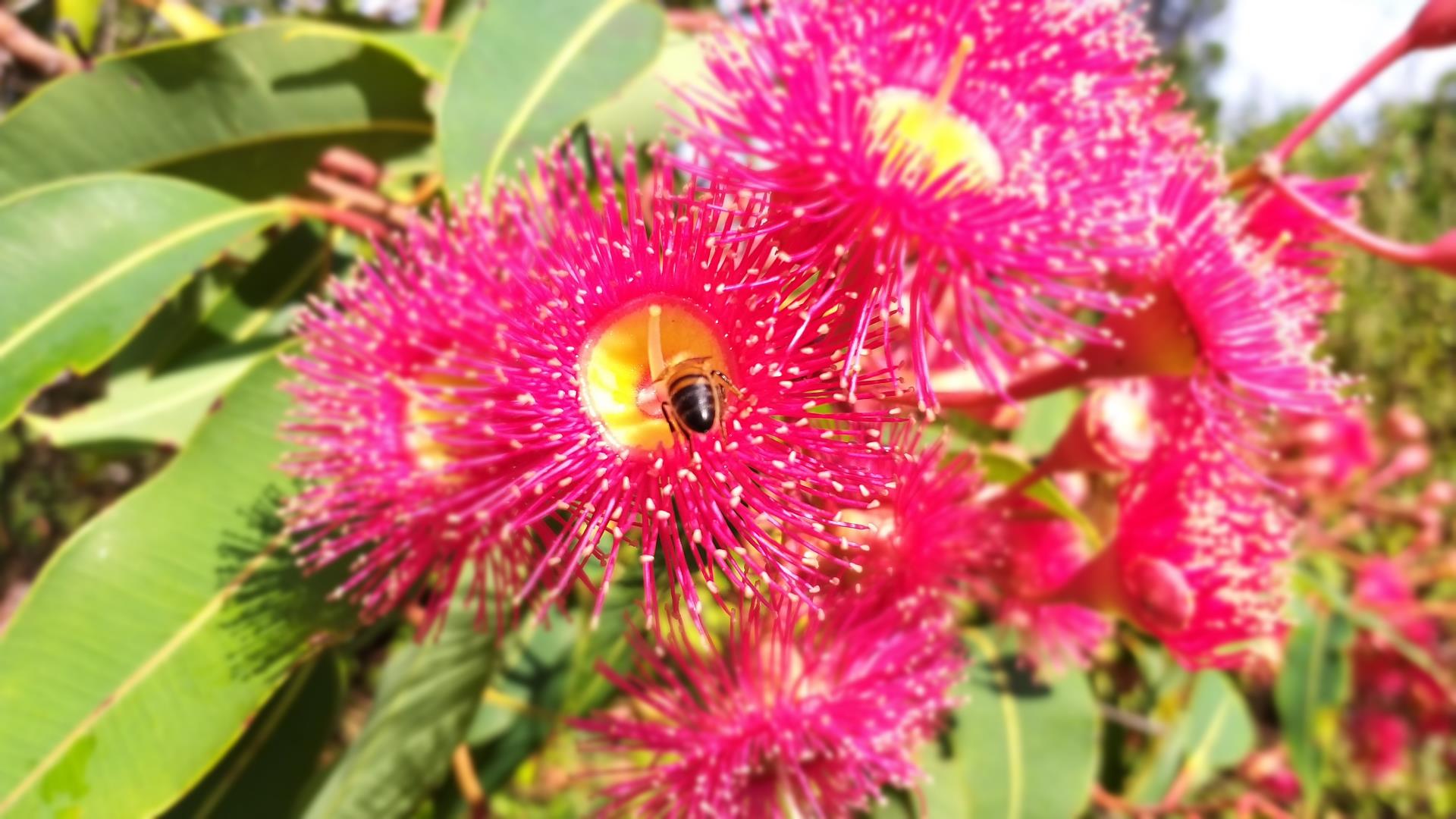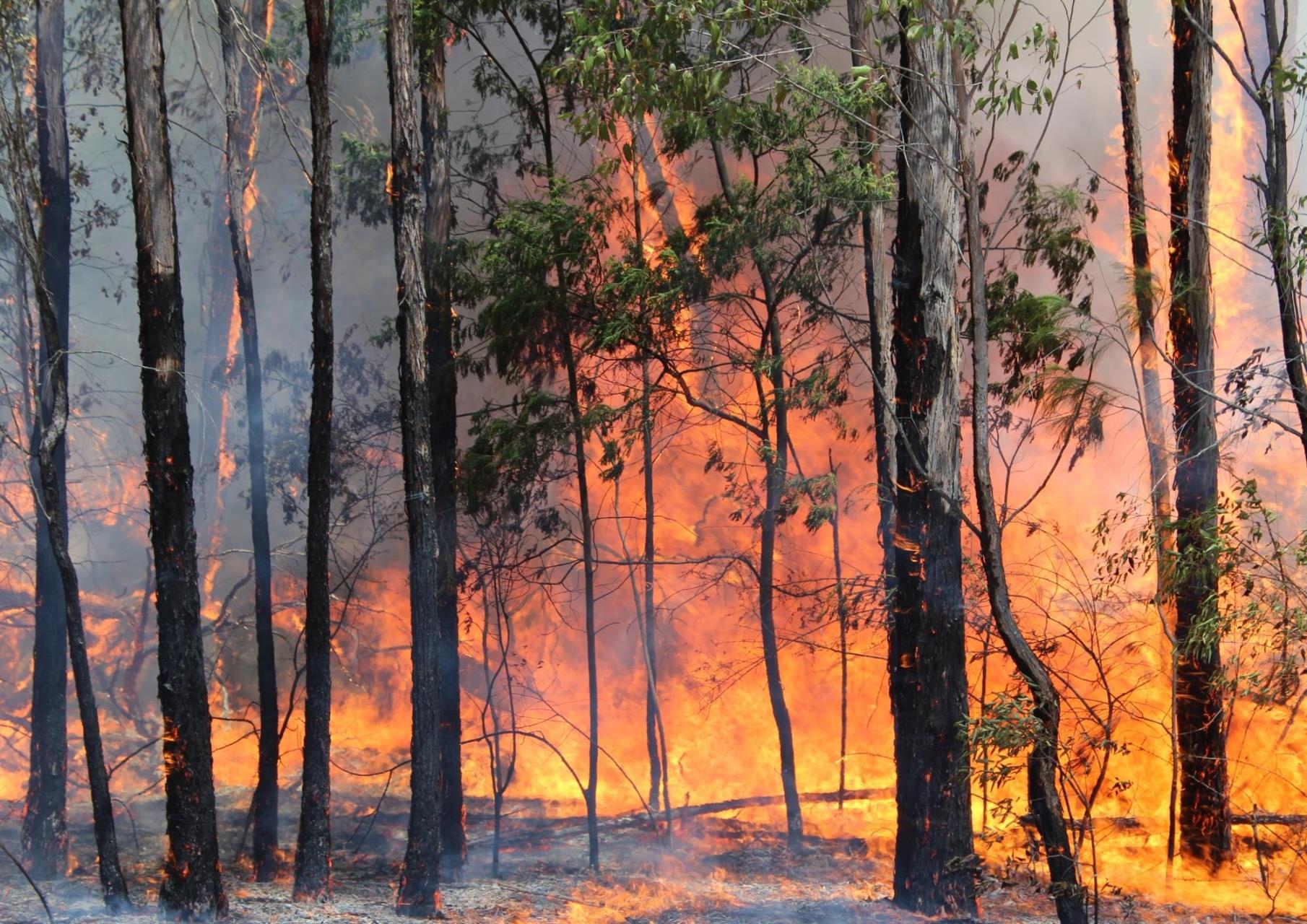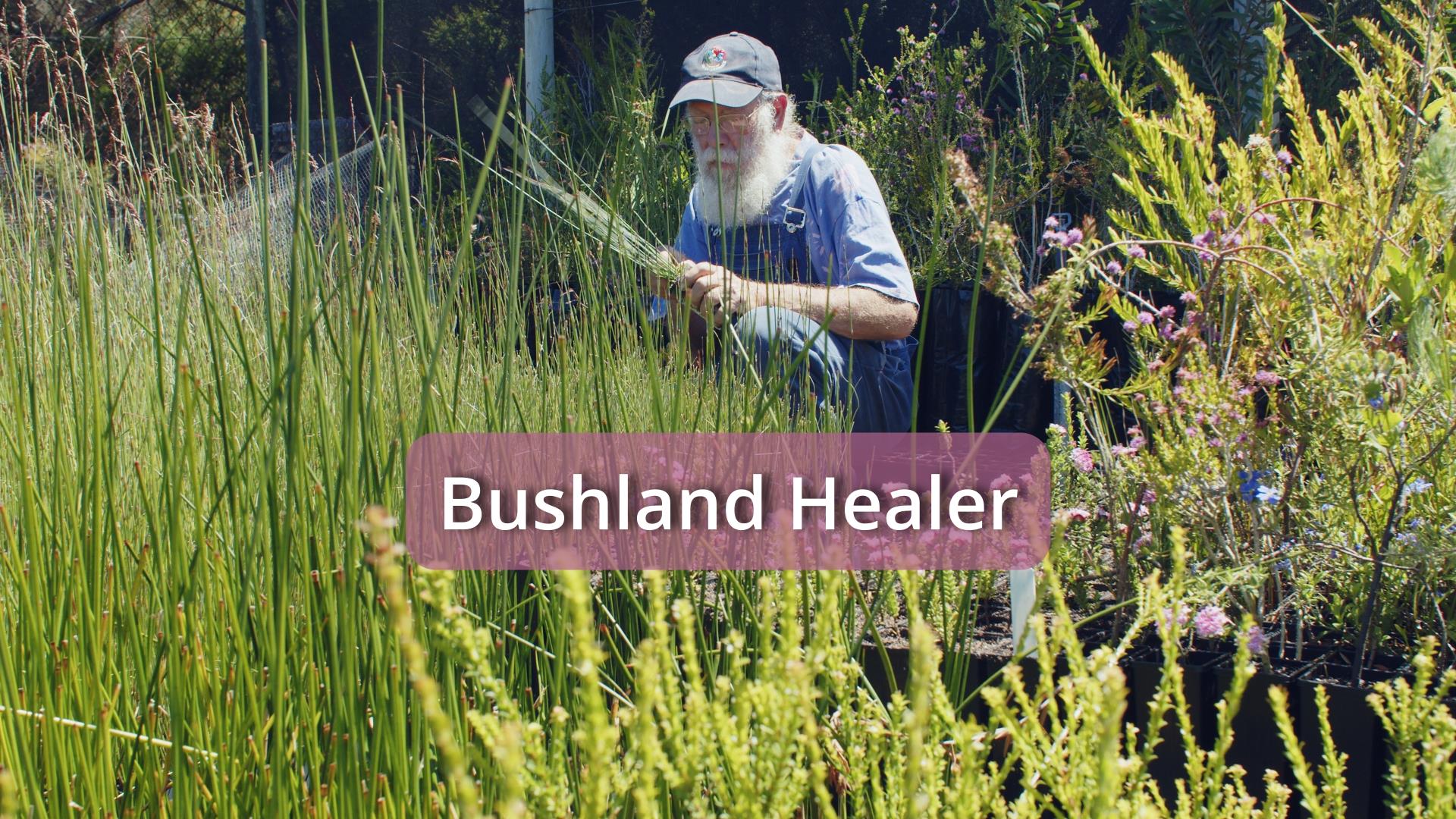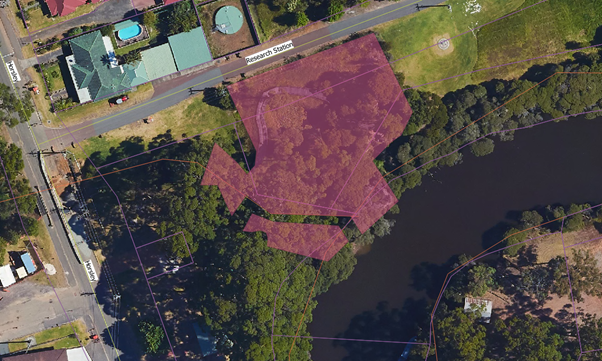Biodiversity refers to the variety of life forms on Earth. The South West of Western Australia is one of 36 global biodiversity ‘hot spots’ – the most species-rich but threatened places on the planet.
Flora
The South West of Western Australia is one of the 34 biodiversity hotspots in the world – an area of high conservation value due to level of species richness and endemism, but also one on a rapid rate of decline. The Shire’s Sustainability Services works towards effective management and conservation of biodiversity values, including threatened and endemic flora found in the Shire of Denmark’s bushland, coastal and foreshore Reserves.

Corymbia ficifolia. Photo by Stuart Dyson.
Flora and Fire
Flora Adaptations to Fire
Many native plants of our southern forests have evolved in the presence of fire for thousands of years and have developed adaptations which allow them to continue to exist in fire prone environments. Some plants (eg: Jarrah - Eucalyptus marginata) are able to reshoot from buds on their stems (epicormic buds) or roots (lignotubers), while others hold their seeds in tough woody pods that open in the heat and smoke of a fire. These seeds drop onto a rich ash bed which assists with seedling growth. For more information on flora and fire ecology please refer to the following information:
Flora - Fire and Ecology Brochure
A Guide to Burning under the Native Vegetation Clearing Provisions (DWER)
Landscaping for Bushfire (CFA)

Prescribed Burning
Denmark Bush Fire Brigades conducted a prescribed burn at the Airport Reserve R41390 on Saturday 11th December 2021 achieving the aim of reducing the risk of bush fire threat to the adjacent East Denmark community and protecting the Denmark Airstrip. It was determined to only conduct the burn in the eastern cell, so as not to over-extend resources and ensure that the prescribed burn could be conducted in a controlled manner. This also enabled any fauna to take refuge in the western cell, which is planned as a prescribed burn at a later date. Weather conditions on the day were ideal enabling all objectives from the burn prescription to be met with over 80% of the understorey successfully fuel hazard reduced.
Prior to the burn occurring there was significant planning, research and collaboration undertaken. Environmental impact assessments were conducted identifying a large very old she-oak (Allocasuarina fraseriana) located within the burn boundary. Recommendations by the Shire Sustainability Officer were for the she-oak to be raked around and wet-down on the day of the burn due to its species sensitivity to fire. The Shire also conducted flora surveys establishing 6 transects across four different vegetation types across the reserve prior to the burn with data collected on species abundance, bushland condition and species composition pre-burn activity. The intent is for pre and post-disturbance survey monitoring to be undertaken on an annual basis from which to assess impacts and trends across these vegetation types over time. A report has been compiled which is available here:
Flora Survey Report Airport Reserve R41390 - Preburn - November 2021
Cultural Burning
Cultural burning needs to be primarily led by the Indigenous community, and our role in the Shire is primarily to make space to encourage these practices to occur.
Cultural burning goes beyond mitigation and is part of Caring for Country and we support that all choices on sites, methods or scope, will be primarily made by the Indigenous community (in partnership with Brigades, the Shire and DFES) .
The Shire is proud to be a part of a collaborative project fostering relations between fire management practitioners, Bushfire Brigades, DFES, Noongar Elders, next generation traditional custodians and educational institutions working together towards incorporating Noongar traditional burning into contemporary fire management practices.
An exciting step towards merging cultural burning practice with contemporary fire mitigation work was taken in Denmark in May 2022 with a trial demonstration burn held near the shores of Wilson Inlet. Following a research process with seven Noongar families, local Noongar Elders, Binalup rangers and representatives from Shire of Denmark, Department of Fire and Emergency Services, University of Western Australia and local bushfire brigades, agreed to work together to conduct a trial cultural burn.
The area for the demonstration trial was only small, but the significance of the event was large as it represented a step towards further collaboration between traditional custodians and authorities as efforts continue to mitigate the risk of bushfire.
Denmark Shire President Ceinwen Gearon said she was proud the Shire of Denmark was setting this important precedent and hoped the collaborative effort would continue to grow. “Our community has a deep respect for the Minang and Bibbulmun Noongar people who have cared for this land we call home for tens of thousands of years,” Cr Gearon said. “We’re delighted to be working together, to witness that continuing tradition of caring for country and to do our part to reduce the risk of fire with the health of the environment as a top priority. We hope to do more in the cultural burning space as part of our bushfire mitigation program and this trial was a key first step.”
Noongar Elder Carol Petterson was designated as the Elder representative to ensure the incorporation of cultural knowledge for the trial burn and said the burn was a success. “I see this as an opportunity for a two-way learning,” Ms Petterson said. “Listening to the old cultural ways of doing things which were in practice for thousands of years and looking at how western science is used today. This collaboration is a blessing and a relief. It’s important to work together in this changing landscape.”
The intention is for the trial to set the precedent for future cultural burns in the Shire of Denmark, allowing authorities to reduce fuel loads while working closely with traditional custodians.
A pre-burn survey was also conducted with the intention of conducting pre and post-burn flora quadrat studies to measure impacts on the floral composition and structure over time from a low-intensity culturally sensitive handburn. The pre-burn flora survey report can be accessed here.
Please refer to the attached brochures for further information: Southern Noongar Kaarl
Cultural Burning Fact Sheet
Fire Suppressants & Water Contamination after a Bushfire
Fire suppressant retardants can be utilised by fire-fighting personnel in the event of a bushfire to help slow the spread of fire. These additives can potentially pose a risk to water plants and aquatic life. In addition water in rain-water tanks could potentially become contaminated after a fire due to the ash, smoke, debris or fire fighting suppressants utilised in bushfire suppression activities. Please find further information in the flyers below:
Fire Retardants and A-Class Foams Shire information sheet
Use of Retardant and A-Class Foams during Bushfire Operations
Using Rainwater after a Bushfire Shire information sheet
Rainwater tanks after a Bushfire
Using Rainwater tanks after a Bushfire
BlazeAid - Assistance with Fencing after a Disaster
BlazeAid is a volunteer organisation that works with individuals and families living in rural Australia providing aid to rebuild infrastructure such as fencing and structures that may have been damaged or destroyed after a natural disaster. To register for assistance please visit the following website: https://blazeaid.com.au/how-to-get-fencing-help/
Recovery Support Services after Bushfire
If you would like further information as to resources and recovery support services available in regards impacts after a bushfire, please visit the Shire of Denmark’s Bushfire Recovery page at: https://www.yourdenmark.wa.gov.au/bushfire-recovery or refer to the attached information sheet: Shire of Denmark Recovery Resources.
Further information is also available on the Department of Primary Industries and Regional Development (DPIRD) website at: https://www.agric.wa.gov.au/climate-land-water/climate-weather/fire
Revegetation

Since 1993, all revegetation is undertaken in-house by the Shire of Denmark using local provenance plant material propagated through our Revegetation Nursery. Over the 30 year tenure of Shire Revegetation Officer Mark Parre, he has revegetated more than 40 sites throughout the Shire ranging in size from several 100 square metres up to 15 hectares. Mark has collected seed from more than 200 species, and used these to propagate and establish more than 700 000 plants. Mark has established many more through direct seeding - all with the help of community to make it happen. Mark’s dedication and tireless efforts have lead to the establishment of rehabilitated areas of healthy bushland which provides a habitat for local flora and fauna, while increasing biodiversity.
To celebrate Mark's legacy whilst in his role as Shire Revegetation Officer, a short film 'Bushland Healer' has been produced by Earthrise Productions showcasing the fantastic work that Mark has been able to achieve through his revegetation efforts healing the bush.
Plant Propagation
A 6 part series of short instructional films on Plant Propagation tips produced by Craig Carter from Earthrise Productions featuring the Shire’s Revegetation Officer Mark Parre can be accessed here:
Episode 1: Techniques for breaking seed dormancy of native wattles and peas with Shire of Denmark Revegetation Officer Mark Parre.
Episode 2: Sowing native seeds into cells and trays with Shire of Denmark Revegetation Officer Mark Parre.
Episode 3: Using smoke water to assist germination with Shire of Denmark Revegetation Officer Mark Parre.
Episode 4: Focus on Boronia: Cloning native plants through cuttings with Shire of Denmark Revegetation Officer Mark Parre.
Episode 5: Tour of the hot house, shade house and seed tunnel with Shire of Denmark Revegetation Officer Mark Parre.
Episode 6: Growing seedlings in the outdoor nursery prior to planting with Shire of Denmark Revegetation Officer Mark Parre.
Bonus Episode: Discover the Albany Pitcher Plant with Shire of Denmark Revegetation Officer Mark Parre.
Bonus Episode: Propagating Hibbertia from cuttings with Shire of Denmark Revegetation Officer Mark Parre.
For further information on Shire of Denmark revegetation sites, plant propagation tips and recommended species for rehabilitation please refer to the following documents.
Shire of Denmark Revegetation Sites
Plant Propagation Tips
Species List for Rehabilitation
Revegetation Plan for Kwoorabup Community Park!
A new revegetation project is underway at Kwoorabup Community Park!
The Kwoorabup Community Park revegetation plan objective is to improve the aesthetics of the area as a high visitation site and entry into Denmark town to both tourists and locals. The first stage involves site preparation with control of invasive weed species, followed by spot-spraying and planting over the following years of resilient native plant species that can out-compete the kikuyu whilst still enabling viewing access and nutrient buffering to the adjacent waterway. There are also plans to develop and install interpretive signage within the park with themes of both heritage and history of the site and flora and fauna of the area.
The first stage of a revegetation plan for Kwoorabup Community Park involves weed spraying targeting invasive rhizomatous grassy weed species such as Kikuyu situated between mowed lawn areas and bushland areas as a barrier for weed encroachment along the Denmark River. Herbicide use can be preferential to manual hand removal of weeds such as kikuyu along riverbanks as it leaves the root mass intact to minimise soil disturbance, ensure stabilisation and provide less opportunity for further weed germination. Consideration of frog-friendly systemic herbicide with application undertaken in summer months when the water is low will ensure maximum effectiveness of weed deaths and minimise run-off into adjacent waterways. Fusilade is also of low toxicity to humans, and biodegrades quickly upon entering a natural system.
All plants intended for the revegetation are from local provenance seed stock and have been propagated in the Shire Revegetation Nursery and include sword sedges and paperbarks along with a suite of other local native flowering plants. Species include: Lepidosperma effusum, Melaleuca spp., Taxandria linearifolia, Taxandria parviceps, Kunzea ericifolia, Gastrolobium sericeum, Beaufortia sparsa.
These works are part of a larger revegetation and development plan for Kwoorabup Community Park and Millers Creek to revitalise the entrance to the park, boardwalk and storm water ponds as outlined in the Shire’s Corporate Business Plan (2021-2024).


Kwoorabup Community Park Revegetation Area

Flora Documents
Native Flora 'Recommendations for your Garden' Information Sheet
Coastal Gardens - South Coast Region
Structural Plant Community Survey, Mt Hallowell and Wilson Inlet Foreshore Reserves (2012)
A Guide to Macrofungi in Mt Hallowell and Wilson Inlet Foreshore Reserves (2011)
Roadside Vegetation and Conservation Values in the Shire of Denmark - Report
Roadside Vegetation and Conservation Values in the Shire of Denmark - Appendices
Flora Website Links
Australian Government Department of Agriculture Water and The Environment - Threatened Species Strategy 2021-2031
Revegetation species lists – Plants for Carnaby’s Black Cockatoos
The economic benefits of farm shelterbelts using native species
Western Australian on-line herbarium